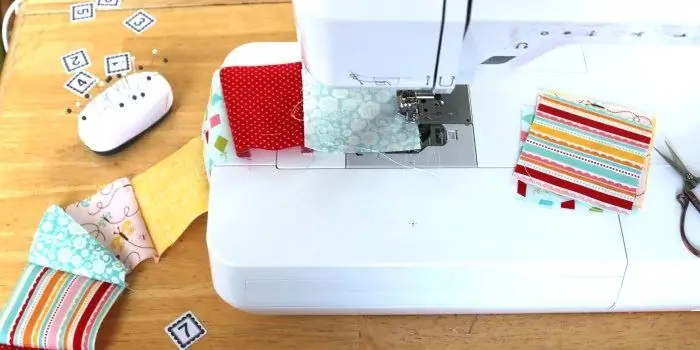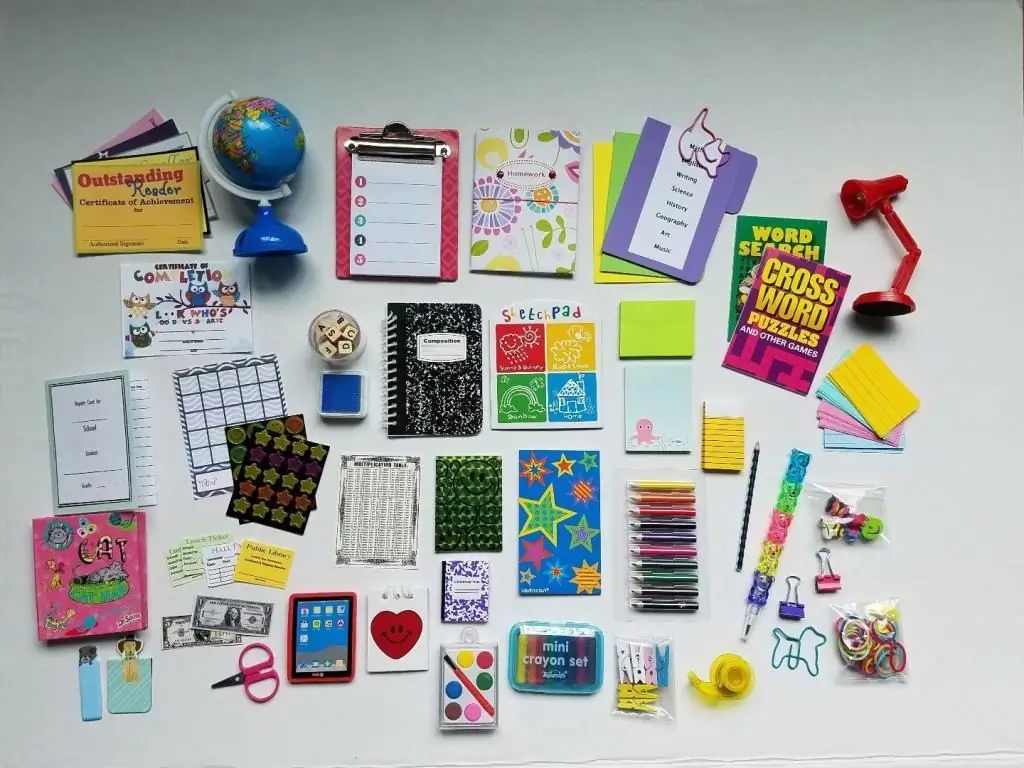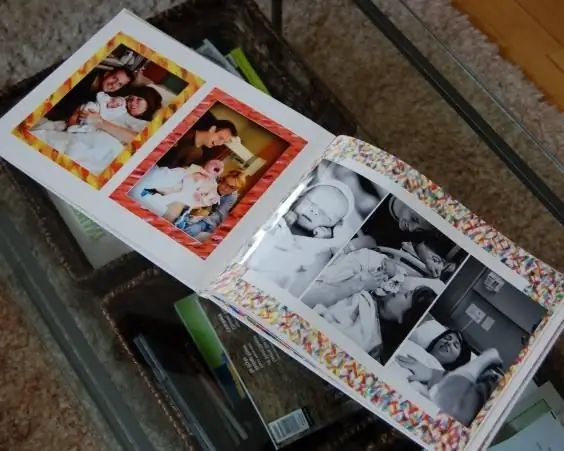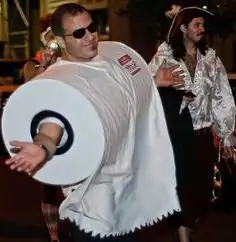
Inhaltsverzeichnis:
- Autor Sierra Becker [email protected].
- Public 2024-02-26 04:43.
- Zuletzt bearbeitet 2025-01-22 22:11.
Nachdem man das Schnittmuster des gewünschten Produktes konstruiert und auf den Stoff übertragen hat, sollte man die Nahtzugabe nicht vergessen. Sie werden zum Verbinden von Teilen benötigt und hängen von mehreren Bedingungen ab. Zunächst wird auf die Materialart und deren Eigenschaften, wie z. B. Fließfähigkeit, Dicke, geachtet. Für verschiedene Produkte und für jede einzelne Naht ist die Höhe der Zugabe unterschiedlich.
Warum ist dieser Wert anders
Die Zulage variiert je nach:
- Materialart: Strick, Fell, Seide;
- Produktart: Bettwäsche, Rock, Hose;
- Nahtdesign-Merkmale: Einfassung, geschlossener Schnitt.

Die Größe der Nahtzugaben für Massen- und Maßanfertigungen ist technisch bedingt unterschiedlich. Um das richtige Muster für das Produkt zu erstellen, sollte berücksichtigt werden, dass zu große Zugaben den Stoff straffen und bei kleinen Zugaben an der Verbindungsstelle die Naht an den Nähten spreizt. Wenn die Größe der Nahtzugabe falsch gewählt wird, kann das Aussehen des Produkts stark beeinträchtigt werden: Verzerrungen, Kräuselungen undsonstige Mängel.
Wie lange muss man sich zurückziehen
Einige Zeitschriften geben Schnittmuster mit Nahtzugaben an. Der Durchschnittswert beträgt 1,5 cm, was nicht immer bequem ist, da dieser Wert nicht für alle Teile des Musters gleich sein kann. Am besten gleich 15 mm vom Musterrand abschneiden und die nötigen Musterlinien neu aufbauen. Das ist bequemer, als alles in einem geschnittenen Produkt auszurichten.

Hier sind die gängigen Nahtzugaben (in cm):
| Schulternähte, Stehnähte ohne Versäuberungsstich | 1, 5-2 |
| Mittlerer Rückenausschnitt, seitlicher Schnitt in Hose und Rock | 1, 5-2 |
| Mittelnaht in Hose | 2-3 |
| Stepper in Hose | 1, 5-2 |
| Seitenschnitte im Produkt und an den Ärmeln | 2-3 |
| Armloch, Rand und Ausschnitt | 1, 0 |
| Mieder an den Rock nähen (an der Taille) | 1, 0 |
| Taillenoberteil | 1, 0 |
| Aufgesetzte Tasche - Top Cut | 2, 5-3 |
| Aufgesetzte Tasche - seitlicher und unterer Schnitt | 0, 7-1 |
| Unteres Kleid, gerader Rock | 4-5 |
| Rock mit Keilabsatz | 2, 5-3 |
| Unterteile von Hemden, Blusen, Jacken | 2, 5-3 |
| Sonnenunterteil | 1, 5-2 |
Unter Berücksichtigung der Materialien müssen die oben genannten Werte entsprechend erhöht werdender folgenden Tabelle, einige Zentimeter.
| Mantelstoffe, Schüttgüter, alle Nähte außer: | 0, 5 |
| an den Seiten von Manschette und Kragen | 0, 5-0, 7 |
| an der Taille genäht | 0, 7-0, 8 |
| Nähte im Futter | 2-5 |
| Verarbeitung Manschette, Kragen mit Futterstoff | 2-2, 5 |
| Schlagdetails | 0, 7-1, 0 |
| Details aus Moosgummi, synthetischer Winterizer | 0, 4-0, 5 |
Auftragsmethoden auf Stoff
Du kannst verschiedene Werkzeuge verwenden, um Linien auf dem Stoff zu zeichnen, um die Nahtzugaben anzuzeigen. Jeder von ihnen ist auf seine Weise bequem, aber die Nachteile sind ihnen nicht fremd.

- Kreide. Es ist für Anfängerinnen unerwünscht, es zu verwenden. Die Linie erweist sich als dick, es ist unpraktisch, sie zu zeichnen, da sich der Stoff verschiebt.
- Dünnes Stück Seife. Die Linie ist dünner, aber auf einigen Materialien ist sie fast unsichtbar oder wird schnell gelöscht. Außerdem reizt Seifenstaub beim Einatmen die Nasenschleimhaut.
- Filzstifte, Marker. Ein sehr anfängerfreundliches Tool. Die Linie ist dünn und gut sichtbar, aber der Vorgang dauert lange.
Erfahrene Handwerkerinnen nehmen Nahtzugaben nach Augenmaß und mit großer Genauigkeit vor und fertigen Muster an, die bereits alle Zunahmen berücksichtigen. Aber um Ihre Hand zu füllen und das Produkt genau so zu bekommen, wie Sie es wollten, müssen Sie es sorgfältig verstehendie ganze Weisheit des Nähens.
Empfohlen:
Wie man alles für Puppen für die Schule herstellt, einschließlich Möbel und Zubehör

Beeilen Sie sich nicht, Schulzubehör für Puppen zu kaufen, denn Sie können mit Ihren eigenen Händen genau das tun, was Sie wollen, und wenn ein Miniaturtagebuch verloren geht oder das Lineal bricht, können Sie schnell neue aus improvisierten Materialien herstellen
Was Sie für Decoupage brauchen: Liste

Decoupage ist die Kunst, Papier oder Stoff auf Gegenstände wie Möbel, Schmuckschatullen und sogar Küchenschränke zu kleben. Dieses Hobby kann sich zu einer Lebensaufgabe entwickeln, Dinge zu verkaufen. Sie können auch maßgefertigte Möbel für Geld herstellen
Dank an Großvater für den Sieg: Bewerbungen für den Tag des Sieges

Victory Day ist eine große Feier der Erinnerung daran, wie der Krieg beendet wurde und alles und jeden auf seinem Weg zerstörte. Bewerbungen zum Tag des Sieges sollten keinen militärischen Charakter haben, sondern im Gegenteil das Ende des Krieges zum Ausdruck bringen. Die Hauptsymbole des Sieges sind vor allem das St.-Georgs-Band, weiße Tauben und die Hauptattribute der Erinnerung sind die ewige Flamme und die Nelken. Und der rote Stern ist ein Symbol der Armee, die einen großen Sieg errungen hat
Erstellen Sie ein DIY-Album für Fotos - bewahren Sie die Erinnerung für die kommenden Jahre

Nun, im Zeit alter der modernen Technik, gehört die Mode der "Großmutters" Fotoalben der Vergangenheit an. Aber wie schön ist es, mit den Kindern in einem Kinderalbum zu blättern, sich an die schönen Momente des Lebens zu erinnern und all die kostbaren Momente wieder zu spüren! Aber wenn Sie die Geschichte Ihrer Familie bewahren möchten, sollten Sie aus allen Bildern die besten auswählen und mit Ihren eigenen Händen ein Album erstellen, in dem Sie wichtige Ereignisse mit Inschriften kommentieren
Lustiges Kostüm für den 1. April. Lustige Klamotten für den 1. April

Das menschliche Leben war schon immer voller Stress, also erfanden die Menschen Feiertage für sich selbst, um herumzualbern und Spaß zu haben, und so nervöse Spannungen abzubauen und Depressionen zu vermeiden. Zuallererst gehört dazu der Aprilscherz oder, wie er in unserem Land allgemein genannt wird, der 1. April. Dieser Feiertag wird von Zeichnungen und Partys begleitet. Damit es ein Erfolg wird, benötigen Sie für den 1. April ein Kostüm, das Sie selbst herstellen können
